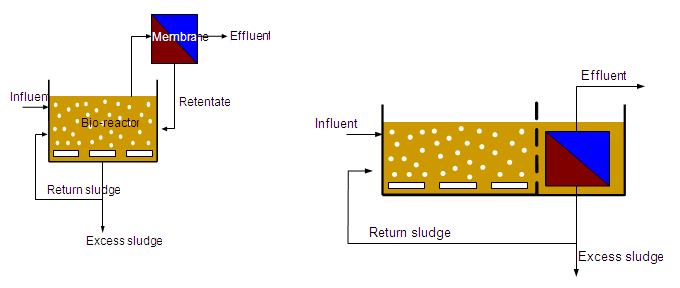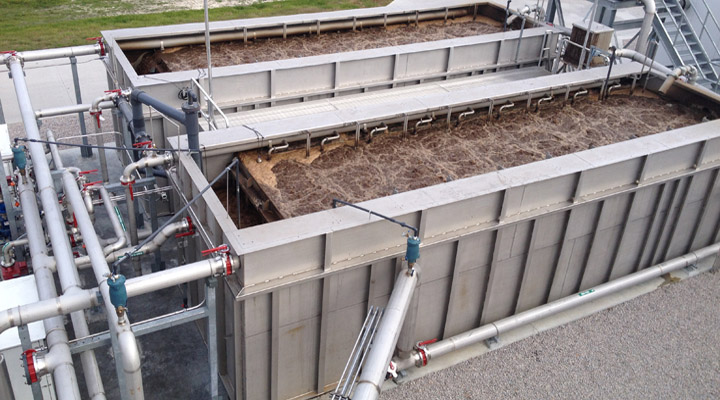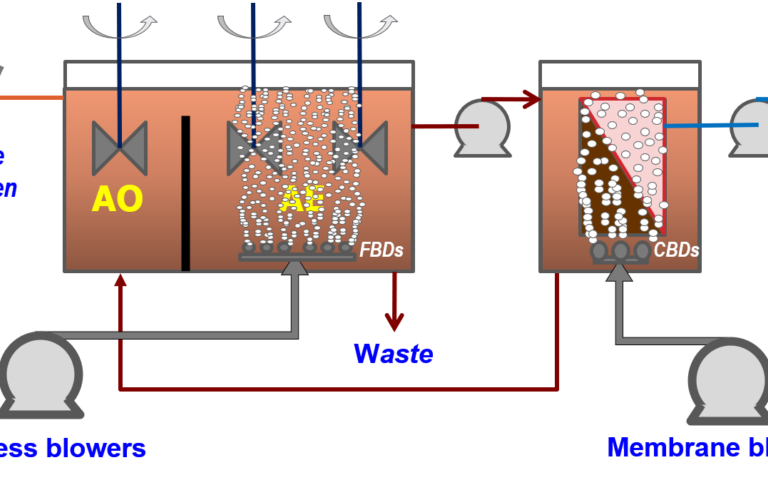How Membrane Bioreactor Contributes to the Reduction of Energy Consumption in Water Treatment
How Membrane Bioreactor Contributes to the Reduction of Energy Consumption in Water Treatment
Blog Article
How Membrane Layer Bioreactors Are Reinventing Water Filtration Equipments
The appearance of membrane bioreactors (MBRs) stands for a considerable development in the area of water purification, combining biological treatment procedures with advanced membrane layer filtration innovations. This combination not only improves the high quality of treated effluent but likewise addresses metropolitan space restrictions, making MBRs especially appropriate for largely populated locations. As global water scarcity increases, the role of MBRs in helping with potable water reuse and lasting water monitoring becomes significantly vital. Yet, the ramifications of this technology prolong beyond performance-- what opportunities and obstacles lie ahead for its widespread implementation?
Summary of Membrane Bioreactors
Membrane layer bioreactors (MBRs) represent a substantial development in water purification modern technology, as they integrate organic treatment processes with membrane layer filtering. This assimilation enhances the performance of wastewater treatment by making use of bacteria to deteriorate natural pollutants while all at once utilizing semi-permeable membranes to different cured water from suspended solids and microorganisms.
The MBR system normally contains an organic activator where the microbial population metabolizes pollutants, followed by a membrane layer filtering system that maintains biomass and allows only clean water to travel through. This dual performance causes greater effluent top quality contrasted to traditional treatment techniques. MBRs can be run in both set and constant flow settings, providing versatility in style and application.
Furthermore, MBRs are identified by their portable footprint, making them ideal for city setups with space restrictions. Membrane Bioreactor. They likewise allow the healing of water for reuse, therefore adding to water sustainability efforts. While MBR technology has gotten appeal in commercial and local applications, its operational intricacies and energy needs require careful factor to consider throughout application. In general, MBRs are at the center of enhancing water treatment efficiency and quality, showcasing the potential for cutting-edge options in environmental monitoring.
Advantages of MBR Innovation
The combination of organic treatment with membrane purification uses numerous advantages for water filtration processes. One of the key advantages of Membrane layer Bioreactor (MBR) innovation is its capacity to effectively eliminate both organic and inorganic pollutants, leading to premium effluent. The membrane layers work as a physical barrier, protecting against suspended solids and microorganisms from travelling through, which enhances the general safety and integrity of treated water.
Additionally, MBR systems require a smaller sized footprint compared to conventional treatment techniques, permitting a lot more reliable room utilization. This compact style is especially useful in city setups where land is restricted. MBRs additionally show functional adaptability, suiting differing influent qualities and flow rates without substantial performance degradation.
Moreover, the process offers enhanced nutrient removal capabilities, particularly for nitrogen and phosphorus, which are critical for avoiding eutrophication in obtaining waters. The reduced sludge production associated with MBR technology likewise translates to decrease disposal prices, making it an affordable service over time - Membrane Bioreactor. Generally, the advantages of MBR innovation placement it as a leading selection for cutting-edge and lasting water purification systems, attending to both environmental and economic problems
Applications in Water Filtration
Applications of Membrane Layer Bioreactor (MBR) technology in water purification are diverse and impactful, dealing with various treatment needs across numerous industries. MBRs properly integrate biological treatment processes with membrane filtration, making them ideal for community wastewater treatment, industrial effluent monitoring, and also potable water reuse efforts.
In community setups, MBRs are progressively used to enhance the quality of treated wastewater, permitting for compliance with rigid discharge guidelines and facilitating the recycling of water for irrigation and non-potable uses. Their small design additionally makes them suitable for urban environments where space is restricted.
Industrially, MBR modern technology is made use of to treat process water and wastewater, specifically in fields such as food and beverage, pharmaceuticals, and fabrics. By properly eliminating pollutants and put on hold solids, MBRs assist sectors minimize ecological effects while recuperating beneficial resources from wastewater streams.
Additionally, MBRs are acquiring traction in decentralized water therapy applications, where small-scale systems can be released in remote locations or creating areas. This flexibility allows communities to achieve lasting water management options, boosting access to clean water while decreasing dependence on go to my site typical treatment techniques.
Study and Success Stories

In one more example, a fabric manufacturing center in Bangladesh adopted MBR technology to address its wastewater challenges. The system decreased chemical oxygen need (COD) degrees from 1,200 mg/L to less than 100 mg/L, hence meeting regulatory standards and substantially lessening environmental influence.
The University of Cape Community's MBR setup has actually verified efficient in dealing with greywater for non-potable reuse on campus. This job not only preserves safe and clean water but likewise offers as an instructional model for sustainable methods.
In addition, a fish and shellfish handling plant in Norway used MBR modern technology to deal with effluents containing high levels of raw material, attaining over 90% pollutant removal. These study emphasize MBR modern technology's versatility and its vital role in boosting water high quality across diverse applications.
Future of Water Treatment Solutions
As worldwide water deficiency and contamination challenges increase, ingenious water treatment services are becoming significantly vital to make sure sustainable access to tidy water. The future of water treatment depends on the integration of innovative technologies that enhance the effectiveness and efficiency of purification processes. Membrane layer bioreactors (MBRs) go to the center of this evolution, incorporating biological therapy with membrane layer filtration have a peek at these guys to create high-quality effluent ideal for numerous applications.

Arising trends such as resource recovery from wastewater, including nutrients and energy, will even more change therapy facilities into eco-friendly hubs. Furthermore, advancements in nanotechnology and membrane materials promise enhanced performance and durability of purification systems.

Conclusion
Finally, membrane layer bioreactors represent a significant innovation in water purification innovations, properly combining organic therapy with innovative membrane layer filtering. The countless advantages, consisting of improved effluent high quality and lowered spatial demands, make MBRs especially suitable for urban applications. Their role in safe and clean water reuse and lasting water monitoring highlights their relevance in resolving international water deficiency obstacles. Continued research and growth will better improve the efficiency and adoption of MBR innovation, ensuring a resilient future for water therapy services.
The appearance of membrane layer bioreactors (MBRs) stands for a substantial innovation in the area of water filtration, merging biological therapy processes with cutting-edge membrane layer filtration modern technologies. As global water scarcity escalates, the function of MBRs in facilitating safe and clean see this page water reuse and lasting water management comes to be significantly vital. They also allow the recovery of water for reuse, hence adding to water sustainability initiatives.As international water scarcity and pollution challenges escalate, ingenious water therapy options are coming to be significantly vital to make certain sustainable access to tidy water. Their role in drinkable water reuse and lasting water monitoring highlights their relevance in resolving global water shortage obstacles.
Report this page